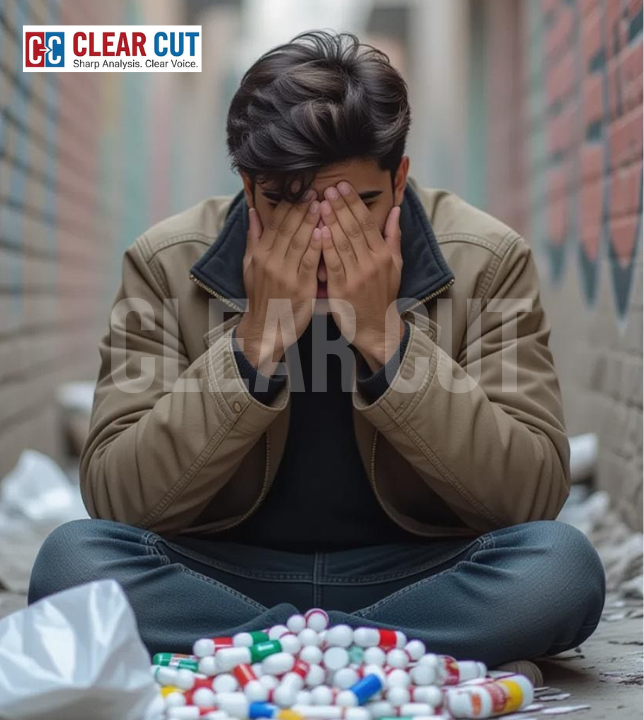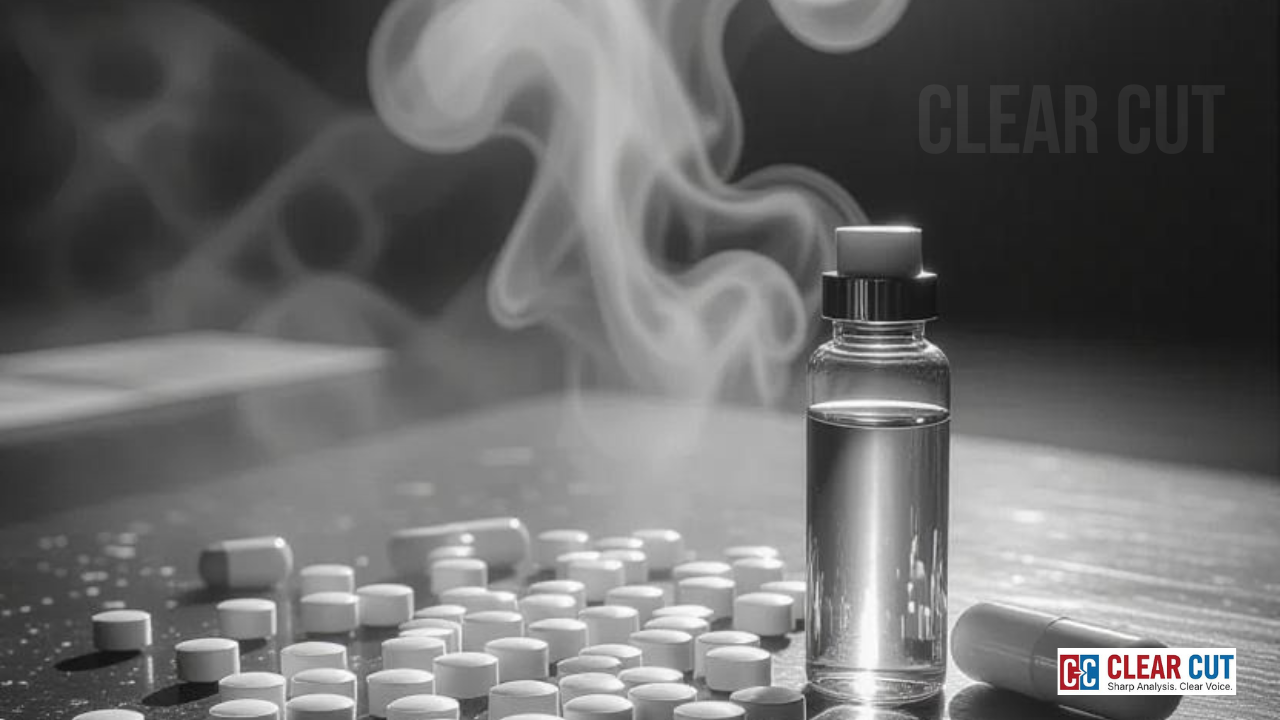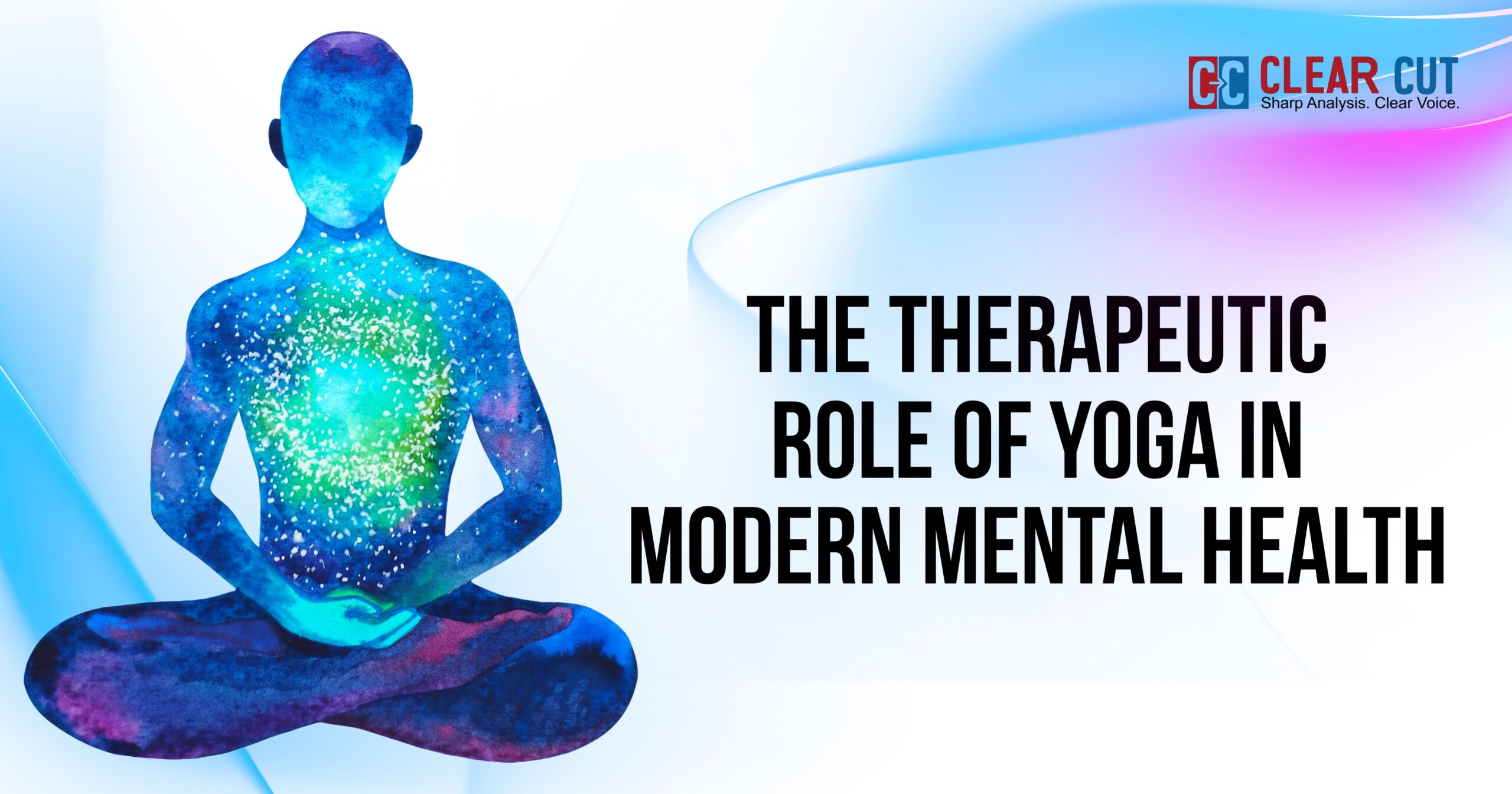Photo Credit: Clear Cut Team
Clear Cut Health Desk
New Delhi, UPDATED: Aug 22, 2025 04:10 IST
Written By: Paresh Kumar
What does the trend look like?
India is facing a sobering reality: drug abuse is no longer a fringe problem, it is becoming mainstream among the youth. According to the Ministry of Social Justice and Empowerment’s 2019 national survey on drug use, about 3.1 crore Indians are cannabis users and 2.3 crore use opioids, with a significant proportion in the 18–30 age group. The United Nations Office on Drugs and Crime (UNODC) also estimates that globally, over 296 million people used drugs in 2021, with young people disproportionately affected.

The rise is not sudden. It has deep social and economic roots. Easy availability of synthetic drugs, peer pressure, unemployment, urban stress, and even aspirational lifestyles have all played a part in this surge. What was once whispered in back alleys has found space in schools, colleges, nightclubs, and even in digital spaces.
Regional realities: How states are affected
The crisis is far from uniform. It has sharp regional contours:
- Punjab has been battling opioid addiction for decades. Studies show that nearly 1 in 3 households in Punjab has at least one substance user (IJMR, 2019).
- Northeastern states such as Manipur and Mizoram have seen rising heroin and synthetic drug use, often linked with cross-border trafficking routes.
- Metros like Delhi and Mumbai face challenges from party drugs such as MDMA, cocaine, and LSD, consumed by urban youth under the guise of recreation.
These variations show that while the problem is national, its face is local, and so must be the solutions.
Cultural spaces: The shadow on Bollywood and beyond
The entertainment industry, particularly Bollywood, has not been immune. The 2020 controversy surrounding drug use in the film industry after Sushant Singh Rajput’s death brought this issue into the limelight. From global icons like Whitney Houston and Amy Winehouse to Indian celebrities whose careers were derailed, substance abuse has long haunted the creative world. The message is clear: fame, talent, or privilege offer no shield against addiction.
What the government is doing now
The current government has ramped up its anti-drug measures through the Nasha Mukt Bharat Abhiyaan (NMBA). On 15–16 August 2025, the University Grants Commission (UGC) directed all higher education institutions to participate in a nationwide drug awareness campaign. Key initiatives include:
- A nationwide human chain across universities and schools, symbolizing collective resistance against drugs.
- Lectures, seminars, and student-led awareness workshops, extending outreach into slums and rural areas through NSS and NCC.
- Creative campaigns such as essay and slogan competitions, street plays, and marathons under the theme Run for Drug-Free India.
- A digital and social media drive, with hashtags like #AzadiFromDrugs and awareness pledges hosted on official platforms.
This campaign aims to reach 3 crore individuals, commemorating the fifth anniversary of NMBA. Institutions and communities are encouraged to promote the Mass Pledge Against Drug Abuse, available on the government portal.
What could be the way forward?
While campaigns are essential, sustainable impact requires long-term structural responses:
- Early intervention in schools: Curriculum integration of drug awareness, counseling services, and peer support systems.
- Community-led rehabilitation: Expanding affordable and stigma-free de-addiction centers with strong family involvement.
- Stronger law enforcement: Tackling supply chains, particularly synthetic drugs being trafficked through digital platforms and cross-border routes.
- Public-private partnerships: Involving corporates, sports icons, and celebrities in driving awareness campaigns that resonate with the youth.
- Monitoring and research: Regular national-level surveys and real-time data sharing to adapt policies dynamically.
Most importantly, the fight against drug abuse needs to be framed not just as a law enforcement issue but as a public health and societal challenge. Youth is the demographic dividend of India. If they fall, the nation’s future wobbles.
Drug abuse among youth is a ticking time bomb. Awareness campaigns like Nasha Mukt Bharat Abhiyaan are a start, but the real test lies in consistent follow-up, grassroots rehabilitation, and offering young people meaningful alternatives. These can be done by creating opportunities for growth, mental health support, and community belonging. As India marches towards its demographic peak, ensuring a drug-free generation is not just a moral imperative, it is an economic and national necessity.




